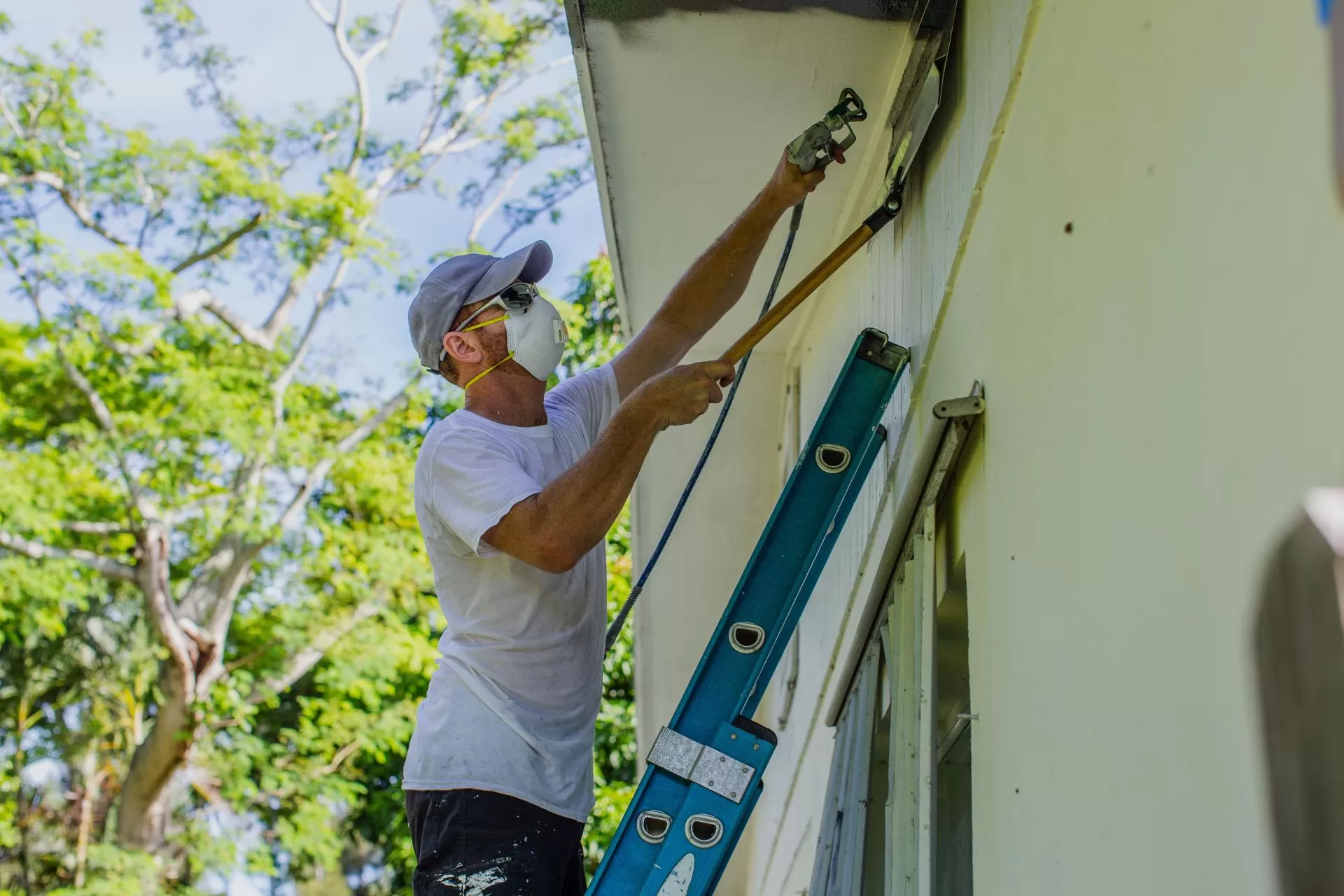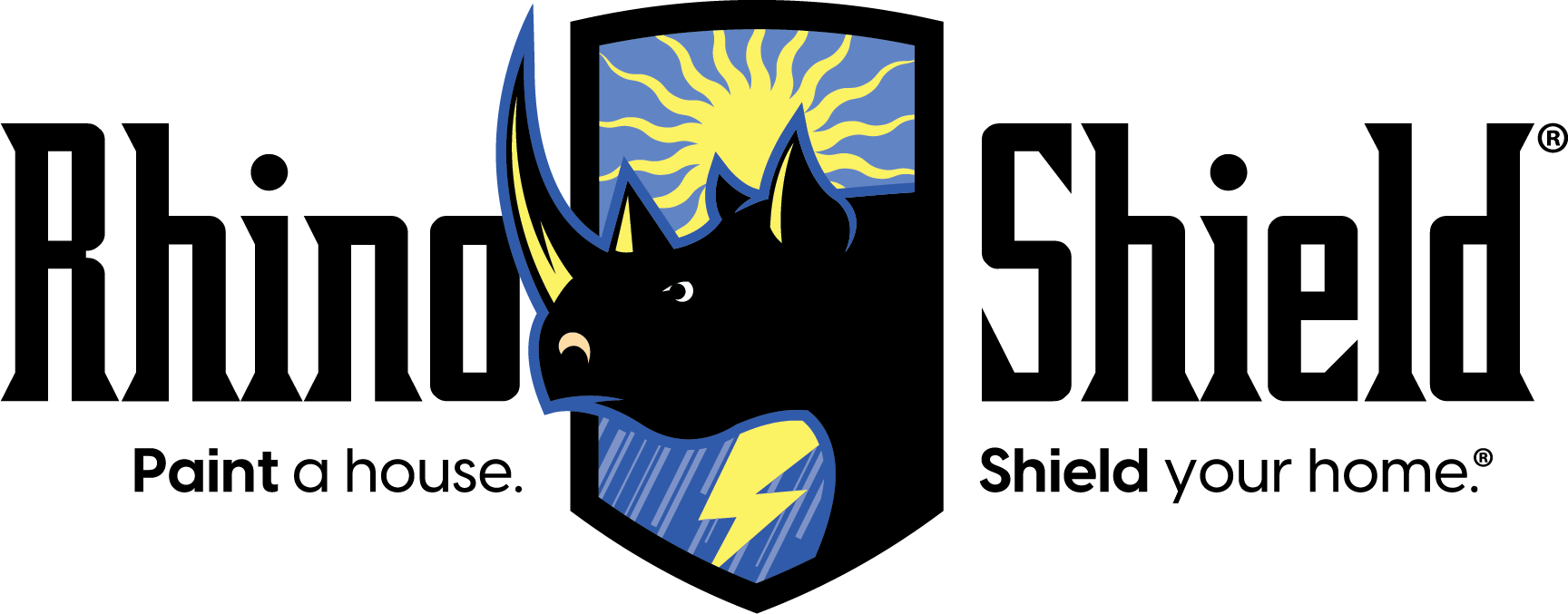
Choosing the right exterior coating for your home is a crucial decision that involves weighing various factors, from performance to cost. Rhino Shield is our elastomeric coating that stands out in the market for its plethora of unique features. Because of claims like this, we get asked all the time, “What are the benefits of Rhino Shield specifically?” and “What are the drawbacks?”
Today, we’ll tackle both questions honestly. We know that Rhino Shield is not the right fit for everyone. So, it’s our job to educate you on everything you can expect with our product, even if we have to cover the negatives.
With that being said, Let's delve into the pros and cons to help you make an informed decision about whether Rhino Shield is the right choice for your home.
Pros
1. Guaranteed Longevity of 25 Years
Rhino Shield is a paint formulated to last. We back this up with a 25-year product warranty that is not prorated, meaning the product coverage does not dwindle with age. We guarantee the entire cost of our coating for all 25 years.
Additionally, our warranty is 100% transferrable. If you are looking to sell your home, the next owner will receive the warranty for the remainder of its duration. This means that with Rhino Shield, the resell value of your home can potentially increase, as Rhino Shield is viewed as more than just paint in the market. It is a protective coating that offers a multitude of benefits.
2. Frequent Third-Party Testing
We at Rhino Shield have a philosophy of validating claims. We believe that the first question customers should ask about a company’s exterior paint is, “Can you show me the testing data?” Marketers will do their utmost to sell a product, even if it means stretching the truth. However, it’s another story when you have independent, third-party labs verify claims of benefits.
This is precisely why Rhino Shield invests so heavily in independent, third-party lab tests. We want to ensure that we and our customers know our exterior coating actually provides the advantages we set out to achieve.
In a protective coating, 4 main areas should be evaluated through testing first and foremost. These are:
- Adhesion – How well does the paint stick to the wall?
- Elongation – How much can the coating stretch without breaking?
- Tensile Strength – The force required to cause a coating to break.
- Permeance – How much water can the coating block from outside, and how much water vapor can it allow to escape from inside your home?
Below are our testing results for all these categories.
Measure Standard Rhino Shield
Adhesion (p.s.i.) More is better 709
Elongation (%) 100 495
Tensile Strength (p.s.i.) 150 178
Permeance (numeric rating) 8.5 – 20 13.16 - 17
For more information on these tests and how they are conducted, navigate to our article on that by clicking here.
3. Energy Saving Through UV Reflectivity and Insulation
Rhino Shield goes beyond aesthetics and protection—it contributes to the energy efficiency of your home. The pigments and colorants used in Rhino Shield reflect heat and light, reducing the absorption of heat by your home.
The ceramic microspheres in the paint further enhance insulation by having low thermal conductivity, which means they don’t trap heat like other materials.
Plus, Rhino Shield is much thicker than average paint. While most traditional paint is around 1 mil thick, ours is 8 – 10 mils. This enhanced thickness aids the insulation of your home, which makes Rhino Shield an excellent aid in keeping your home cool in the summer and warm in the winter.
4. Elastomeric Coating: Flexibility for Varied Environments
Rhino Shield's elastomeric nature sets it apart from traditional paints. With an impressive elongation rating of 495%--almost 5x more elastic than the standard for an elastomeric classification—the coating is extremely flexible. This flexibility allows Rhino Shield to adapt to the natural settling of a house and the expansion and contraction caused by varying temperatures. The result is a coating that resists peeling and chipping, maintaining its integrity over time.
5. Permeability: Water-Repellent and Breathable
A crucial aspect of exterior coatings is their ability to handle moisture. Rhino Shield excels in this area by being water-repellent and breathable. This combination helps protect your home by allowing water vapor via showers and cooking pots to escape from the substrate more easily, helping to prevent issues like mold and rot. This will also aid in keeping water from getting stuck between your home and the coating, which can lead to your paint peeling off.
6. Fire Retardant Properties
One of Rhino Shield's standout features is its exceptional durability against many different elements. With a Class A fire rating, it not only enhances the aesthetic appeal of your home but also provides an added layer of safety against external fire threats. Importantly, when Rhino Shield burns, it does not release toxic smoke, making it a safer choice for your family and property.
7. Eco-Friendly and Made in America
For environmentally conscious homeowners, Rhino Shield ticks the green boxes. Our coating has no VOC’s (Volatile Organic Compounds), ensuring that your choice to protect your home doesn't harm you when in direct contact or the environment.
Additionally, Rhino Shield is veteran-owned and made in America. Jason Crawford was an Infantry Team Leader who served 8 years in the U.S. Army. During his service, he earned the Commendation Medal x3, Combat Infantry Badge, and Purple Heart.
Cons
1. Higher Upfront Cost
While Rhino Shield offers many benefits, it comes at a higher upfront cost.
- For the average three-bedroom home, you can expect Rhino Shield to come at around $13,000 - $18,000.
- For the same size home, traditional exterior paint will run you about $5,000 - $9,000.
It’s important to note that Rhino Shield is guaranteed to last 25 years before repainting is necessary, while your average latex paint has a life cycle of 5 to 7 years. This means you’ll end up paying more in the long run through frequent repainting. Your home is the most important investment you’ll ever make, so why not invest in it a little more to save in the long term and help protect your asset?
2. No Availability for DIY Enthusiasts
If you enjoy handling home improvement projects, including painting, Rhino Shield is not an option. Our product is not available for purchase in stores or online; it is exclusively provided through our trained and certified dealers. This means you must factor in the cost of professional labor when considering Rhino Shield.
This may be a deal-breaker for some, but no matter what paint you decide to go with, we always recommend hiring a professional. Since a major part of a coating’s longevity rests on how it’s applied, having experienced painters do the job alleviates potential problems that may manifest even less than a year after the installation.
3. Limited Gloss Options
For those seeking a high gloss finish on their home's exterior, Rhino Shield may not fully meet expectations. Water-based elastomerics, such as Rhino Shield, have limitations on gloss options to maintain their flexible properties. While some sheen options are available, they are only within a certain degree to ensure the coating's effectiveness.
Conclusion
Rhino Shield stands out as an innovative and high-performance exterior coating with numerous benefits. These include:
- Guaranteed longevity with a 25-year warranty.
- Stellar independent, third-party lab test results.
- Insulation/UV reflective technology that can save you money on A/C costs.
- Extremely flexible – helps prevent peeling and chipping.
- Breathable coating that allows water vapor through and prevents wind-driven rain from getting in.
- Grade A fire rating that will keep your home safer from the threat of outdoor fires.
- Environmentally safe.
However, you should consider these cons as well. As even one of them might be a deal-breaker for some.
- Higher initial cost.
- Can’t apply Rhino Shield yourself.
- Limitations on sheen options.
Ultimately, understanding your specific needs and priorities is crucial when deciding if Rhino Shield is the right choice for your home.
If you want to paint your home, get a free quote from us by clicking the button below.

